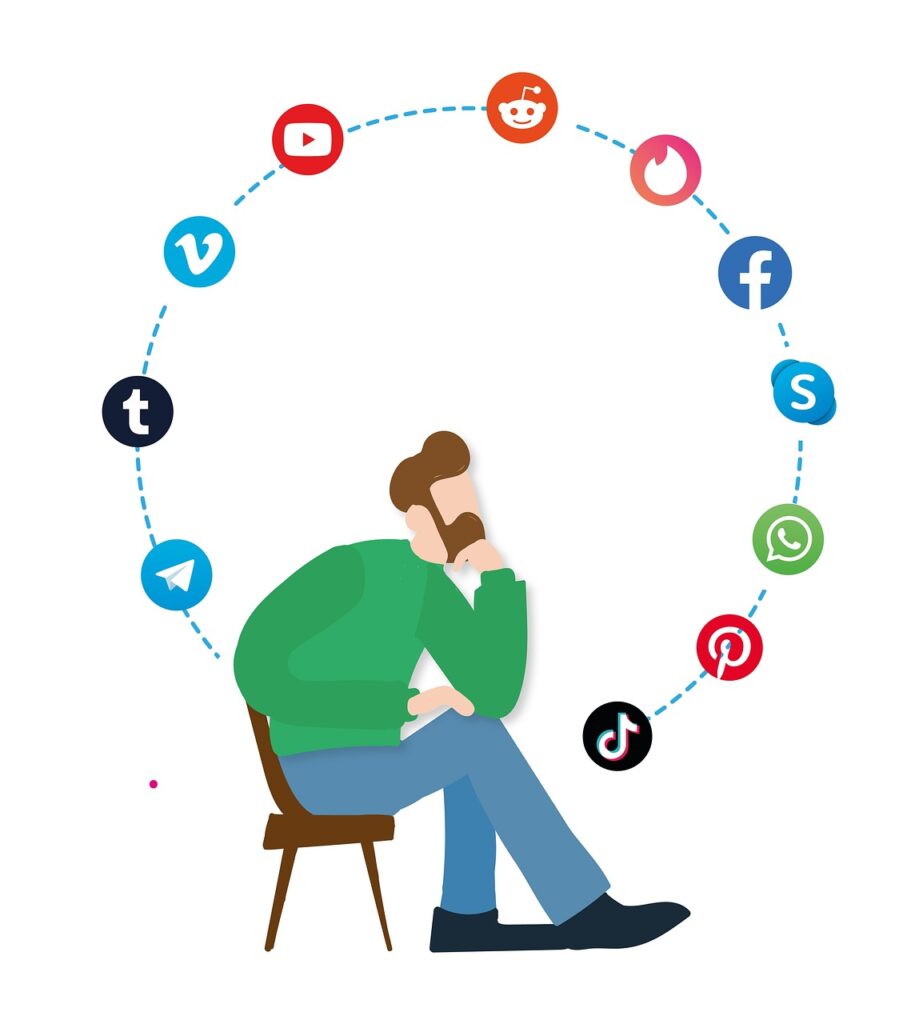Table of Contents
Introduction
In a digital world where attention spans are short and competition is fierce, creating a viral social media campaign can be a game-changer for your brand. A single post, reel, or tweet can catapult your brand into the spotlight, drive massive engagement, and strengthen your connection with your audience. But here’s the truth: virality isn’t just luck—it’s strategy, timing, creativity, and emotion, all rolled into one.
In this comprehensive guide, we’ll explore how you can craft viral social media campaigns that don’t just chase likes, but also build a long-lasting brand presence.
Chapter 1: Understanding What Makes Content Go Viral
Before we dive into strategies, let’s understand the science and psychology behind viral content. Virality occurs when people not only consume your content but feel compelled to share it with others. This usually happens when content:
- Triggers emotion (laughter, shock, awe, empathy)
- Offers value (tips, hacks, inspiration)
- Aligns with current trends or conversations
- Makes the viewer feel seen or understood
- Is easy to consume and share
A study by Jonah Berger, author of Contagious: Why Things Catch On, suggests that high-arousal emotions like awe, anger, or anxiety are more likely to drive sharing. But there’s more. Virality depends on relatability and timing just as much as creativity.

Chapter 2: Know Your Audience Deeply
To create viral campaigns, you need to know your audience better than they know themselves. This goes far beyond demographics. You need to understand:
- Their daily struggles
- What makes them laugh
- The language and memes they use
- Their habits, hobbies, fears, and aspirations
- What content they already engage with
Tools to Use:
- Google Trends
- Reddit (check niche subreddits)
- Facebook/Instagram groups
- Social listening tools (like Brand24 or Sprout Social)
- Instagram/Twitter comment sections
Once you know what your audience is into, you can tailor your campaign around their interests—and make it feel like it was made just for them.

Chapter 3: Set Clear Objectives (Not Just Views or Likes)
Virality for the sake of virality is empty. You want your campaign to align with your brand’s broader goals. Ask yourself:
- Do I want more brand awareness?
- Is the goal to drive traffic to a website?
- Am I looking to increase sign-ups or sales?
- Do I want to change perception or improve brand image?
Having clear objectives will help you measure success meaningfully and tweak future campaigns based on outcomes.
How to Create Social Media Campaigns That Stand Out
Chapter 4: Create Emotionally Resonant Content
Emotion drives action. If you can make someone laugh, cry, or feel inspired in 15 seconds—you’ve won half the battle. Viral campaigns tap into emotions such as:
- Humor: Witty memes, clever captions, absurd scenarios
- Inspiration: Real-life success stories, uplifting messages
- Empathy: Shared struggles, vulnerable moments
- Surprise: Unexpected plot twists, bold reveals
- Nostalgia: Relatable childhood memories or throwbacks
Case Study: Remember Dove’s “Real Beauty Sketches”? It made people rethink self-image and beauty standards, sparking deep emotional responses and massive shares.
Chapter 5: Ride Trends—but Make Them Yours
Jumping on a trending audio or meme format can give your content a significant head start. But don’t just copy-paste—add your brand’s unique twist. Think:
- A brand take on the latest TikTok dance
- Using a trending meme to tell your brand story
- Twisting a viral challenge into something niche for your industry
Pro tip: Use trend-tracking tools like TrendTok, Later, or just scroll through Reels/For You pages to catch the wave early.

Chapter 6: Leverage Storytelling and Relatable Narratives
Humans are wired for stories. Even in short-form content, storytelling helps create a deeper bond. Instead of saying, “Buy our skincare,” show a reel of a teenager who struggled with acne and found confidence again.
Structure your story:
- Hook (something to grab attention in first 3 seconds)
- Relatable conflict or situation
- Resolution (how your brand helped or fits in)
Example: A small coffee brand could post:
- A series of “morning fails” reels
- A barista’s story of pursuing their passion
- Behind-the-scenes bloopers that humanize the team
Chapter 7: Keep It Snackable, Visual, and Easy to Share
Virality thrives on simplicity and visual appeal. People scroll fast, and unless something stands out instantly, they’ll move on. Make sure your content is:
- Visually striking (use bold colors, crisp design)
- Mobile-optimized
- Short and punchy (especially videos)
- Captioned (many people watch with sound off)
- Easy to download, screenshot, or repost
Also, include soft CTAs like:
- “Tag someone who needs this!”
- “Share this with your squad.”
- “Save this for later.”
Krishna bansal% – Content writer
Chapter 8: Collaborate with Creators & Influencers
Influencers can take your campaign to places you can’t reach alone. But choose wisely:
- Look for micro-influencers with strong engagement (5k–50k followers)
- Ensure their audience overlaps with yours
- Collaborate on storytelling, not just product shots
Influencers bring authenticity. Let them present your brand in their voice. Their relatability often makes your content more share-worthy.
Example: Nykaa regularly collaborates with beauty creators for relatable reels like “Types of girls during a sale” that subtly feature their products.

Chapter 9: Tap Into User-Generated Content (UGC)
People trust people. Encouraging your audience to create and share content can organically boost reach and credibility.
Ways to generate UGC:
- Contests and giveaways
- Branded hashtags (e.g., #ShotOniPhone)
- Challenges (dance, makeup transformations, etc.)
- Duets or reaction prompts
Make it worth their while: Feature them, offer shoutouts, or give exclusive discounts.
Chapter 10: Use Humor—But Keep It On-Brand
Humor is one of the fastest ways to go viral. A well-timed joke or witty caption can explode with engagement.
Just be careful:
- Don’t joke about sensitive topics
- Avoid sarcasm that may be misinterpreted
- Stay within your brand tone (quirky, classy, savage?)
Brand Example: Zomato, Swiggy, and Dunzo have mastered the art of humorous, timely, and relatable posts that almost always go viral.
Chapter 11: Time It Right
Timing is everything. Post when your audience is online and ready to engage. Best posting times vary by platform, but tools like Buffer, Later, or Sprout Social can help.
Also consider:
- Launching campaigns during holidays or festivals
- Tying into cultural or trending events
- Using moment marketing (e.g., during IPL, Olympics, Budget announcements)
Example: Amul’s timely topical ads go viral regularly because they’re relevant and immediate.

Chapter 12: Monitor, Engage, and Amplify
Once your campaign goes live, your job isn’t done.
- Engage with comments—especially the funny ones
- Re-share audience reactions
- Respond to DMs or mentions
- Use ads to push high-performing organic content
Viral moments are like waves—ride them before they pass. Responding in real-time helps you ride the buzz.
Chapter 13: Measure What Matters
Don’t get distracted by vanity metrics. Instead, measure:
- Shares and saves (true indicators of value)
- Comments and mentions (conversation volume)
- New followers or website visits
- Time spent on content
- Sales or sign-ups if that’s your goal
Create a simple dashboard and track every major campaign. Learn what worked—and what didn’t.
Chapter 14: Case Studies of Viral Brand Campaigns
1. Spotify Wrapped: People looked forward to seeing their own music personality. It was personal, visually pleasing, and easy to share—pure virality gold.
2. Dove’s Real Beauty Sketches: Touched on universal insecurities and used emotional storytelling. Over 180M views globally.
3. Apple’s #ShotOniPhone: Minimal effort from brand, maximum UGC. Elevated users while showing off camera quality.
4. Amul’s Topical Ads: Timely, witty, and always relevant. Viral because they feel current and nostalgic at once.
5. Old Spice’s “The Man Your Man Could Smell Like” Absurd humor + strong personality = unforgettable brand positioning.

Conclusion: Your Brand’s Next Big Moment is Just One Idea Away
Creating a viral campaign isn’t a one-size-fits-all process. It’s a mix of deep audience understanding, timely creativity, emotional storytelling, and strategic execution.
Don’t aim to go viral just for likes. Instead, aim to connect, engage, and create moments that people want to be a part of. Because when you make people feel something, they remember your brand—not just your post.
So go ahead—start brainstorming, experimenting, testing, and most importantly, having fun with your content.
Your viral moment is waiting.
FAQs: Viral Campaigns
Q1: Can small businesses create viral campaigns without big budgets? Yes! Creativity beats cash. Think local humor, emotional relatability, and storytelling.
Q2: How often should I try to create viral content? Focus on consistency and quality. Not everything will go viral—and that’s okay.
Q3: What are the biggest mistakes in trying to go viral?
- Copy-pasting trends without originality
- Forcing humor or emotion
- Ignoring audience feedback
Q4: Should I boost a viral post with ads? Definitely. Amplify content that’s already performing well to widen its reach.
Q5: How do I keep my audience engaged after a viral campaign? Follow up with meaningful content, behind-the-scenes stories, thank-you posts, or exclusive offers to convert new followers into loyal fans.
